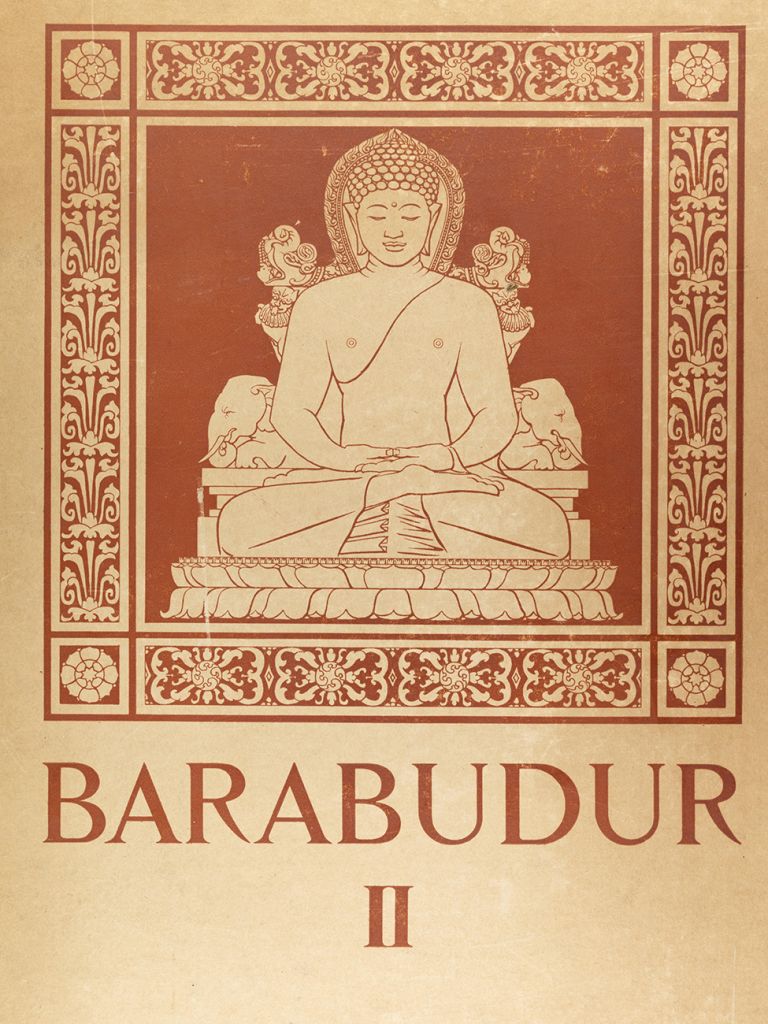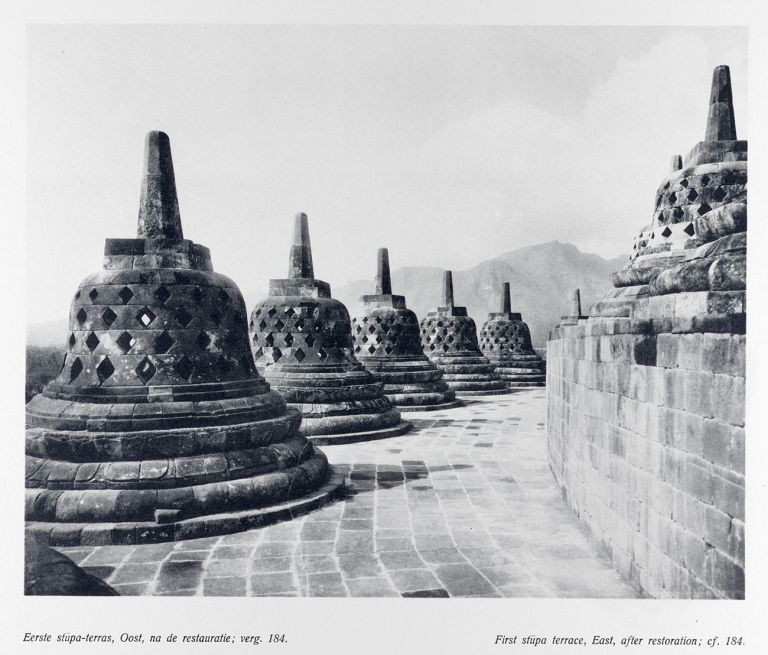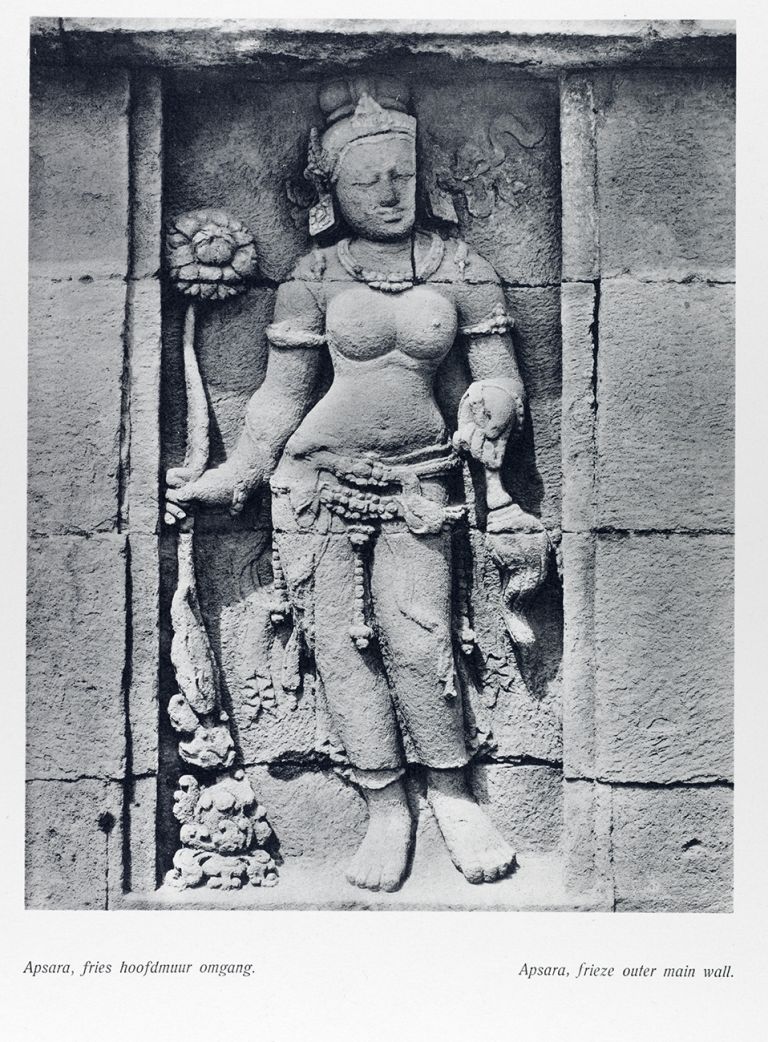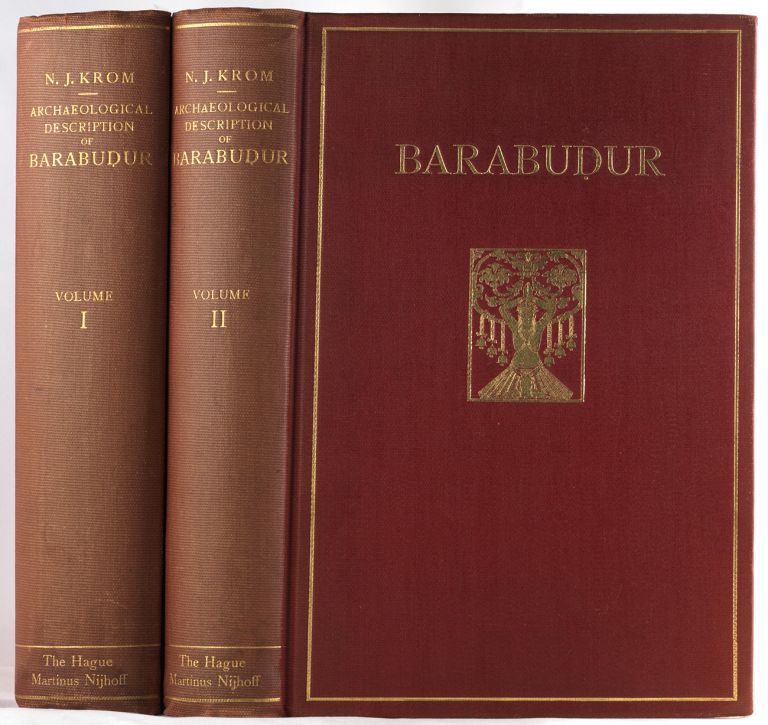
Barabadur
A monumental archaeological and architectural study of Borobudur with 642 photographic illustrations of the reliefs, including those illustrating the life of the Buddha and scenes from the Jataka, the Ganawyuha, Maitreya, Bodhisattwa and Samantabhadra, and statues of Buddha, together with line drawings showing architectural details of the complex.
During the great restoration of Barabudur, 1907-11, under the direction of the military engineer Theodor van Erp, a complete series of more than 2000 photographs of the monument were taken by Jean Jacques de Vink, 1883-1945. A series of drawings were made by the Javanese artist, Mas Kartodisastro. These form the basis of this comprehensive monograph on the monument produced in two parts with publication spanning a period of twelve years. The first volume, Archaeological Description, by the Director of the Archaeological Survey of Indonesia, Nicolaas Johannes Krom, 1883-1945, consists of two volumes of text and two large portfolios of 440 plates depicting the complete series of reliefs and Buddha images.
The second volume, Architectural Description (Bouwkundige Beschrijving) by Theodor van Erp has one volume of text (in Dutch, never translated) and a large portfolio with 48 detailed ground plans, sections of terraces and elevations of galleries, and 202 photographic plates showing the monument before and after restoration, objects believed to have come from Barabudur, and free standing sculptures.
The remarkable remains of Borobudur had been re-discovered in 1814, by H.C. Cornelius, a Dutch engineer sent to investigate by Thomas Stamford Raffles, British Governor of Java. Cornelius with his 200 men cut down trees, burned down vegetation and dug away earth to reveal the long-hidden monument. He was unable to unearth all the galleries for danger of collapse. The first attempt to record the splendour of the monument was made in 1848 when F.C. Wilsen began four years work drawing all 988 reliefs. These were published by Leemans in 1873 in two large portfolios, but were considered to be neither sufficiently artistic nor suitable for scientific study. A second attempt was begun in 1863 when von Kinsbergen was commissioned to photograph Borobudur, but he was unable to complete the task, partly due to the difficulty of setting up his camera at a sufficient distance from the reliefs in the confined space of the
monument’s galleries.
This successful third attempt was undertaken during the extensive restoration of the monument between 1907 and 1911, under the supervision of Theodor van Erp, who dismantled and rebuilt the upper three circular platforms and stupas. Borobudur was listed as a World Heritage Site in 1991, “to represent a masterpiece of human creative genius”.


1920-1931 The Hague: Martinus Nijhoff. First English edition together with full set of plates and two volumes of Dutch text. Two quarto volumes, pp.vi, 478, frontis.; 365, 2 folding collotype plates; two text volumes in folio, pp.viii, 791, 2 plates; xv, 486, 82, text figures and plans; three large folio plate volumes with 642 photographic plates, 41 engraved plates (1 double page), and 9 folding plans.
Archaeologisch Onderzoek in Nederlandsch-Indie (Archaeological research in Indonesia) III.

Limitation: The English text is one of 100 copies only. This is the copy of the translator, C. Bodde-Hodgkinson, with her pencil annotation, and with a signed post card from the author to her loosely inserted. The first Dutch text and volumes I and II of plates are numbered No.96 of 200, of which 35 were not for sale; the second Dutch text volume and third plate volume are numbered No.78 of 215, of which 50 were not for sale.
Provenance: Bibliotheek, Academie van Beeldende Kunsten, ‘s-Gravenhage; John Adams Thierry, Southeast Asia Art Foundation; gifted to The University of Michigan Asian Art Archives; withdrawn stamp.